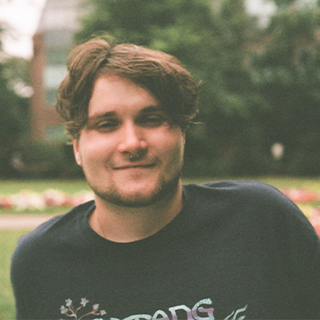Introducing ‘nicotinfluencers’, the tobacco industry’s loophole to attract younger audiences
“My favourite has to be the Ruby Berry flavour. What’s yours?” Asks GW Harrison, an Instagram influencer with 35,000 followers, holding up VELO—a brand of flavoured nicotine pouches—to the camera. He’s one of the 26 influences who between them boast a sizeable 2.2 million followers, employed by British American Tobacco (BAT) to promote and help sell their nicotine products.
View this post on Instagram
Harrison is joined by the likes of Bru-C, an MC and rapper who likes to boast to his audience of 156,000 that the nicotine products have “glow in the dark technology”, as well as the Made in Chelsea star Alex Mytton who once posted a VELO-themed video for his 391,000 followers to interact with.
View this post on Instagram
It’s a marketing tactic often used by brands to target an audience that is, in general, fairly young—making them harder to reach through traditional advertising channels. As television, print and radio marketing continues to lose its grip on younger demographics, forward-thinking entrepreneurs look to influencer marketing to sell their products.
Love or loathe the influencer industry, the data indicates it’s here to stay—set to reach $13.8 billion by 2022. It’s fair to say the industry isn’t humankind’s proudest accomplishment. Even when marketing ‘normal’ products, influencers are often criticised for being materialistic, promoting toxic beauty standards, which can have a detrimental impact on the mental wellbeing of social media users.
However, this type of influencer (those content creators who hold up addictive and harmful substances for the newsfeeds of impressionable social media users) has far more sinister consequences. They’re called ‘nicotinfluencers’, and, unfortunately, they’re on the rise. Let me explain.
The harmful rise of the nicotinfluencer
This isn’t the first instance of nicotine corporations dipping their toes into the influencer pool, with little to no remorse about who will be on the receiving end of these adverts. Earlier in 2021, the Bureau of Investigative Journalism found that BAT had bet around 1 billion pounds on harnessing the popularity of influencers on TikTok, Instagram and Facebook in order to reach young people in countries including Pakistan, Sweden and Spain.
To sway the inevitable backlash from VELO campaigns, British American Tobacco (BAT) claims it markets its products as a way to ‘move on’ from cigarettes. Despite these claims, not one post or video created by these influencers actually mentioned quitting in their content. Should we even be surprised? Large tobacco companies have a track record of smoke screening (both literally and figuratively) the general public for their own gain. As recently as the 1990s, the very people profiting from tobacco were the same people arguing cigarettes aren’t addictive in court.
An addictive substance promoted through addictive means
The toxicity of this trend is made worse when taking into account how social media can be just as addictive as nicotine itself. Compared to traditional media, social media marketing can feel more intimate—a way of communicating products through parasocial relationships. Yes, the influencer community isn’t directly damaging but when misused it can have a detrimental impact, particularly on younger users. As Doctor Jess Maddox, an internet culture expert at the University of Alabama, shared with Screen Shot, “It’s important for children and teens who use social media to understand what they are seeing might be a paid performance.”
Unfortunately, social media has blurred the lines between paid and authentic content. Maddox continued, “Social media platforms bring us closer to content creators than TV, film, and billboards ever did. This perceived closeness lets users build trust and fandom in creators—that perceived closeness could make one feel more inclined to take up a harmful product.”
Maddox “absolutely” believes there should be more regulations on how these products are marketed towards children through influencers. She drew similarities between nicotinfluencers and the Kim Kardashian/FDA pharmaceutical debacle, in which the celebrity misled her followers by promoting a drug that she claimed cured her morning after sickness while failing to communicate its many side effects. As a consequence, social media platforms changed their requirements so that any sponsored post needed an #ad or #sponsored label to convey their insensitivity. But is this really enough?
“Social media regulation addressing the tobacco/nicotine industry‘s shift to marketing alternative forms of smoking will be one of the pressing issues of the next decade [in the social media space],” Maddox argued. “The rapidly-changing nature of social media platforms and digital culture has made it difficult for regulation to keep up, but the response and ethical values should be on the brands and companies.”
Trusting tobacco companies to deliver ‘ethical’ values is about as superfluous as trusting Boris Johnson and his pals to not break lockdown rules. In other words, they’re crooks: their marketing tactics are blatantly encouraging young people to pick up a potentially deadly tobacco habit that, according to the WHO, still kills more than 8 million people a year. The sad reality is that until valuable and stringent regulation is put in place, countless impressional teens will be manipulated into thinking vaping is cool because their favourite DJ said it once on TikTok. Luckily, those at the top of the Big Tech food chain—the people manning the social media ship and deciding what content is and isn’t good for us—have our wellbeing as their number one priority… Oh, wait.






